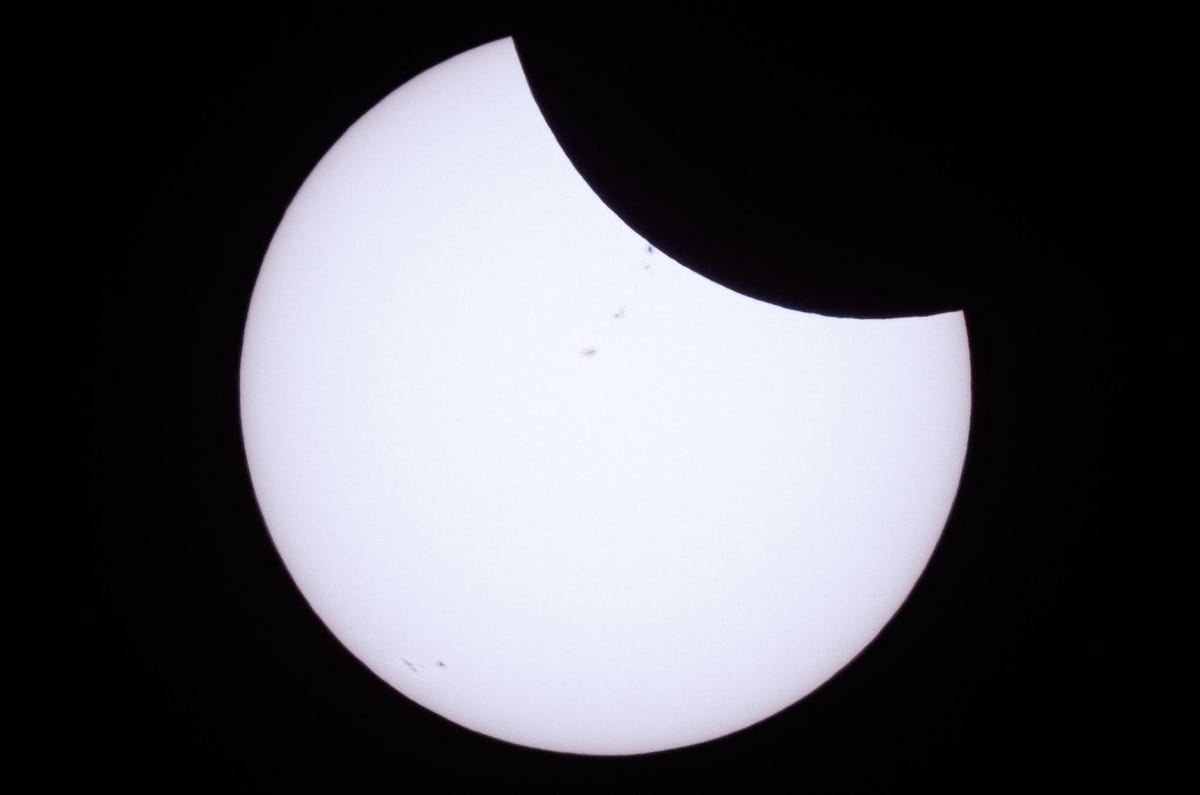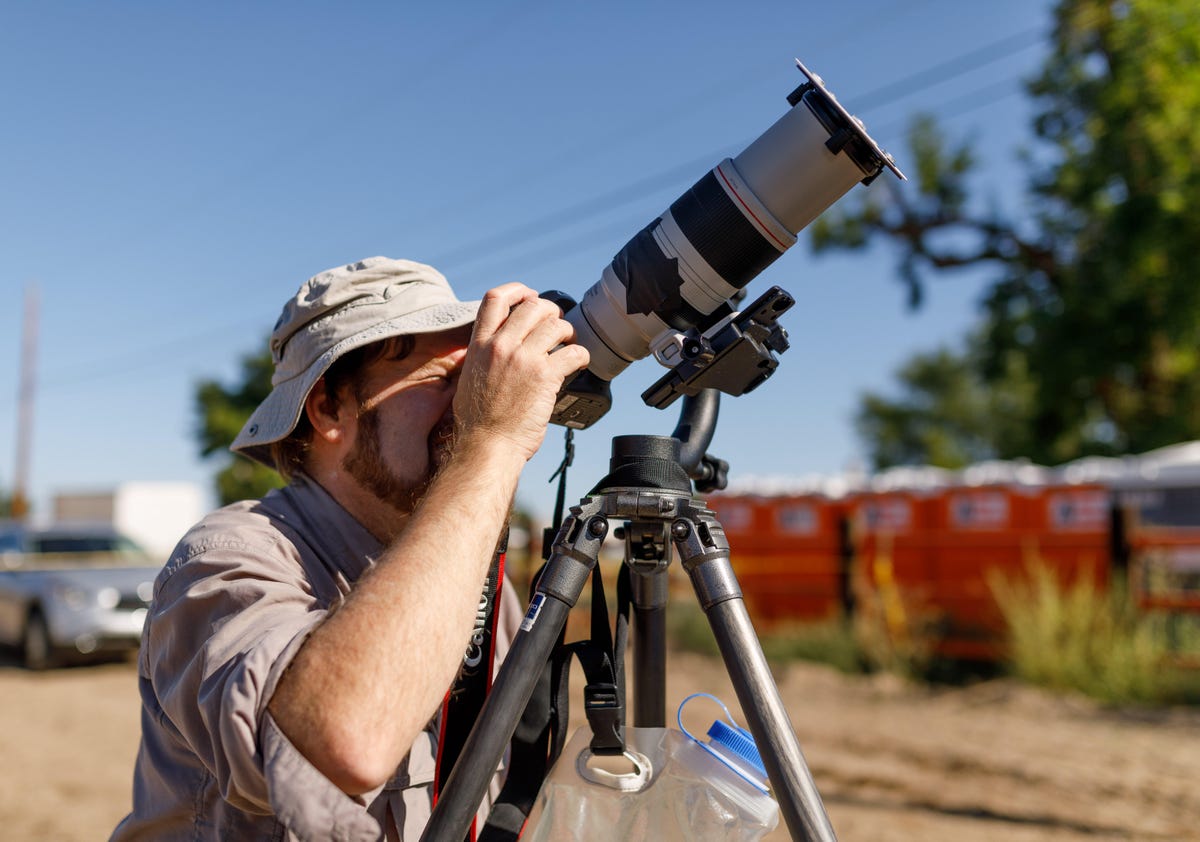The “great American eclipse” graced our skies on Monday, and if you let this rare celestial event pass you by, it’ll be quite a wait for the next one. Another total solar eclipse over North America won’t happen until 2044. The good news is you can rewatch the event with footage from the best vantage points, check out all the stunning photos of the eclipse and start preparing to see the next one.
A total solar eclipse happens when the moon passes between the Earth and the sun, blocking the sun and turning an otherwise sunny day to darkness for a short period of time. Depending on the angle at which you’re viewing the eclipse, you may see the sun completely shrouded by the moon (called totality) or some variation of it. The more off-angle you are and the farther you are from the path of the eclipse, the less likely you’ll be to see the totality.
The 2024 total solar eclipse reached the Mexican Pacific coast on April 8 at 11:07 a.m. PT (2:07 p.m. ET), and then traversed the US in a northeasterly direction from Texas to Maine and on into easternmost Canada.
If you weren’t in that path of totality, here are a look at some of the options to rewatch it online, or where you’ll have to travel for the next eclipse.
Total solar eclipse path in 2024
The eclipse crossed over the Pacific coast of Mexico and headed northeast over mainland Mexico. The eclipse made its way over San Antonio at approximately 2:30 p.m. ET on April 8 and moved through Texas, over the southeastern part of Oklahoma and northern Arkansas by 2:50 p.m. ET.
By 3 p.m. ET, the eclipse was over southern Illinois, and just 5 minutes later, was traveling over Indianapolis. Folks in northwestern Ohio were treated to the eclipse around 3:15 p.m. ET, and it then traveled over Lake Erie and Buffalo, New York, at around 3:20 p.m. ET. Over the following 10 minutes, the eclipse was seen over northern New York state, then over Vermont. By 3:35 p.m. ET, the eclipse worked its way into Canada and off the eastern coast of North America.
How to rewatch the solar eclipse online
NASA hosted a three-hour live stream of the eclipse, which included commentary by NASA experts, astronauts on the international space station, celebrities and looks at watch parties across the nation. It featured views from locations in the path of totality, including Dallas and Kerrville, Texas; Russellville, Arkansas; NASA’s Glenn Research Center in Ohio; Indianapolis; Carbondale, Illinois; Niagara Falls, New York; and Houlton, Maine.
You can rewatch the live broadcast on streaming service NASA Plus or on NASA’s website, or rewatch the stream on CNET’s YouTube channel.

Where and when is the next solar eclipse?
While the next total solar eclipse won’t be visible over North America for 20 years, there will be other partial, annular and total eclipses across the world. Here are the next five:
- Oct. 2, 2024: An annular solar eclipse, visible from South America; and a partial eclipse, visible in South America, Antarctica, the Pacific Ocean, the Atlantic Ocean and North America.
- March 29, 2025: A partial solar eclipse, visible from Europe, Asia, North America, South America, Africa, the Atlantic Ocean and the Arctic Ocean.
- Sept. 21, 2025: A partial solar eclipse, visible in Australia, Antarctica, the Pacific Ocean and the Atlantic Ocean.
- Feb. 17, 2026: An annular solar eclipse, visible in Antarctica; and a partial eclipse, visible in Antarctica, Africa, South America, the Pacific Ocean, the Atlantic Ocean and the Indian Ocean.
- Aug. 12, 2026: The next total solar eclipse will be visible from Greenland, Iceland, Spain, Russia and a small area of Portugal; a partial eclipse will be visible from Europe, Africa, North America, the Atlantic Ocean, the Arctic Ocean and the Pacific Ocean.
Best places to watch an eclipse
When evaluating the best places to watch one of those upcoming eclipses, you’ll first want to determine where you’ll have the best angle to see the totality. The farther off-angle you are — in other words, the farther north or south of the eclipse’s path — the less of an impact you can expect.
Therefore, if you want to have the best chance of experiencing the eclipse, you’ll want to be in its path. When the eclipses come closer, check for details on what cities will have the best vantage points.

Watch this: See the 2024 Total Solar Eclipse in Action
Eclipse eye safety and photography
When preparing for the next solar eclipses, it’s critical you keep eye safety in mind.
During an eclipse, and especially during the periods before and after totality, don’t look directly at the sun without special eye protection. Also, be sure not to look at the sun through a camera (including the camera on your phone), binoculars, a telescope or any other viewing device. This could cause serious eye injury. Sunglasses aren’t enough to protect your eyes from damage.
If you want to view the eclipse, you’ll instead need solar viewing glasses that comply with the ISO 12312-2 safety standard. Anything that doesn’t meet that standard or greater won’t be dark enough to protect your eyes.
If you don’t have eclipse viewing glasses handy, you can instead use indirect methods for viewing the eclipse, like a pinhole projector.
Read more: A Photographer’s Adventure With the Eclipse
In the event you want to take pictures of the eclipse, attach a certified solar filter to your camera. Doing so will protect your eyes and allow you to take photos while you view the eclipse through your lens.
There’s also a new app to help you both protect your eyes and take better photos of the eclipse on your phone. Solar Snap, designed by a former Hubble Space Telescope astronomer, comes with a Solar Snap camera filter that attaches to the back of an iPhone or Android phone, along with solar eclipse glasses for protecting your eyesight during the event. After you attach the filter to your phone, you can use the free Solar Snap Eclipse app to zoom in on the eclipse, adjust exposure and other camera settings, and ultimately take better shots of the eclipse.

CNET’s Stephen Shankland photographs the 2017 eclipse just as the moon starts occluding the sun. He used black gaffer’s tape stuck to his lens barrel to lock the focus.
2024 eclipse compared to 2017
The previous total solar eclipse occurred in 2017, and many Americans had a great view. Although there are plenty of similarities between the 2017 total solar eclipse and the one on April 8, there were a handful of differences. Mainly, the 2024 eclipse covered more land and lasted longer.
The 2017 eclipse started over the northwest US and moved southeast. Additionally, that eclipse’s path was up to 71 miles wide, compared with a maximum width of 122 miles for this year’s eclipse. Perhaps most importantly, the moon completely covered the sun for just 2 minutes, 40 seconds in 2017. This year, maximum totality lasted for nearly four-and-a-half minutes.
For more on the Great American Eclipse, check out CNET’s coverage on expert eye protection and viewing tips, where to get free solar eclipse glasses, how to figure out if your eclipse glasses are safe or fake and whether your solar panels will be affected by the total solar eclipse.




















+ There are no comments
Add yours